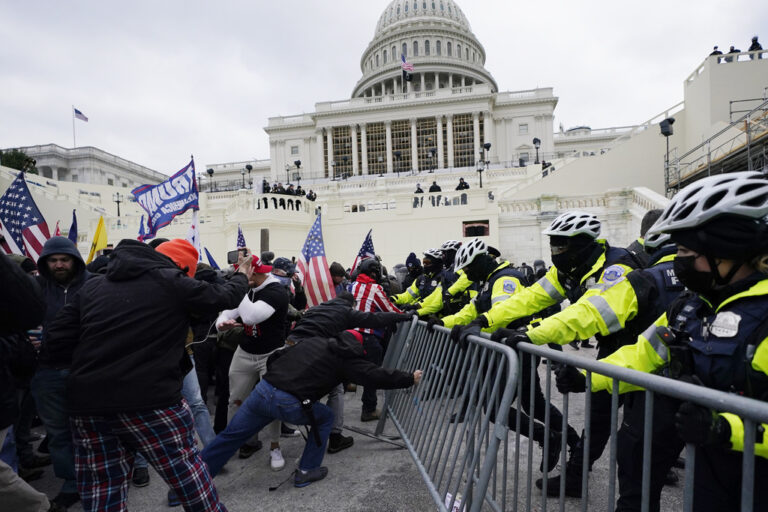 Donald Trump continues to have three big advantages in the presidential race: (1) He is not a professional politician, (2) Democrats have held the White House for the last eight years, and (3) he is not Hillary Clinton.
Donald Trump continues to have three big advantages in the presidential race: (1) He is not a professional politician, (2) Democrats have held the White House for the last eight years, and (3) he is not Hillary Clinton.
Many voters simply want change, and Trump, for better or for worse, surely represents a different direction. That means there is a strong breeze at the GOP nominee’s back, particularly against a Democratic nominee who personifies the status quo, the establishment and the divisiveness of the past decade.
Though Clinton, like Trump, has millions of enthusiastic supporters and admirers, the former secretary of state remains a damaged nominee. FBI Director James Comey’s blistering criticism of her is only the latest assessment of Clinton’s record, and polls still show more Americans having an unfavorable view of her than a favorable one.
But a look at many of the elements of a presidential contest suggests that Clinton still has a considerable advantage 17 weeks from Election Day. As The race is still hers to lose.
The campaign
Clinton has an elaborate campaign structure and field operation that reflects what most successful presidential efforts have done. Trump doesn’t, and organizations take time to build. Trump never established a foundation during the primaries on which to build a general-election campaign.
The Clinton campaign and its super PAC, Priorities USA, have already spent over $45 million combined on TV ads in swing states. The Trump campaign has not yet aired TV ads, and Trump’s allies, including the National Rifle Association and Rebuilding America Now, a super PAC backing him, have spent less than $3 million.
The summer months aren’t normally decisive in a general election. But they can be, as they were in 1996 when the Dole campaign’s financial problems allowed President Bill Clinton and his allies to define the GOP nominee early, essentially wrapping up the race before Labor Day.
This cycle, the Clinton team is more experienced and credentialed than Trump’s, and its members have been working together for months. Trump continues to shake up his campaign team, bringing on strategists and operatives who certainly have some experience but, taken together, don’t constitute the party’s “A team.”
Party unity
Republicans are more divided over their presidential nominee than at any time since 1964. For all of the Democratic concerns about Bernie Sanders voters generally and 18-to-29-year-olds in particular, Democratic voters are already more united behind Clinton than Republicans are behind Trump.
That assessment is based both on anecdotal evidence – including the number of high-profile Republicans who refuse to support Trump – and on the most recent Washington Post-ABC News, Fox News and NBC News-Wall Street Journal polls, all of which show Clinton getting a higher share of the Democratic vote than Trump gets of the GOP vote.
Republican defections from Trump are likely to be much larger than the 6 to 9 percent who defected to the Democratic nominee in the past four presidential elections, to say nothing of the number of Republican voters who will simply not cast a vote in the presidential race.
Demographics
There is little evidence at this point that the Obama coalition is breaking apart or that Trump has changed the arithmetic of the 2016 election. Clinton has held a lead over Trump in every national poll since mid-May except for the widely discounted Rasmussen polls.
Recent Post-ABC, Fox and NBC-Wall Street Journal surveys all show Clinton holding onto African Americans, Latinos and younger voters at levels roughly equal to Obama’s 2012 showing, while improving noticeably on Obama’s 10-point margin among women. They also agree that Trump is not close to the 20 percent margin among white voters that Mitt Romney received.
Taken together, those numbers suggest that Trump is running well behind where Romney ended up on Election Day 2012. Romney lost the popular vote by almost 3.9 points.
Of course, turnout levels among various demographic groups remain uncertain, and it is difficult to completely disprove a scenario promised by Trump where millions of previous non-voters show up at the polls to support the Republican nominee. But the burden certainly is on Trump supporters to show that the electorate is changing in a way that benefits their candidate.
Candidate quality
Voters know both major-party nominees, and they don’t like either one. But they have a slightly less unfavorable view of Clinton. As a candidate, Clinton is far more disciplined and likely to perform better in debates and during the campaign’s pressure-filled final months.
On the stump, Trump continues to ramble from topic to topic, and his tweets remain controversial. He also continues to miss opportunities to make the race about Clinton, preferring to talk about himself and argue with his critics. Clinton is authoritative and detailed, while Trump too often blathers.
Clinton’s problem with “authenticity” is real and serious, but the impact of that weakness is minimized by Trump’s nomination and his weaknesses.
The national conventions and presidential debates can move poll numbers, and there is plenty of time for dramatic events to change voters’ minds. A terrorist attack, an economic or financial crisis, a new revelation about one of the nominees or something comparable could shake up the race, creating a new polling baseline. And Trump’s standing in national polls might well improve when pollsters switch from samples of registered voters to likely voters.
But for now, Clinton’s strengths continue to more than offset Trump’s advantages. And given how well known the two nominees are and how polarized the country is, it will be difficult for either hopeful to move numbers. That is also good news for Clinton.
(c) 2016, The Washington Post · Stuart Rothenberg











7 Responses
We’re not voting for campaigns or advertisements or tv commercials we are voting for this one and only guy that we hope will help Americans with Hashems help.
There are two more reasons:
1) The electorate is much less white than in the past. Trump has gone out of his way to alienate minorities.
2) The electorate has become more Democratic in recent years. Democrats have won he popular vote in 5 of the last 6 Presidential elections, and if you add up the number of states that have voted Democratic in the last 6 elections you already have 242 electoral votes. The corresponding number for the Republicans is 102.
He lies even more than she does and has been accused of more crimes recently. I just might write in Vermin Supreme as a protest vote.
I didn’t bother going through the entire article, but point 2 is obviously wrong. Dems controlling the WH for 8 years makes it very easy for a Republican to take over. Simmering resentment, etc. etc. Look at the history of presidential patterns in this country.
This should be obvious to anyone even mildly intellectual on the subject of politics.
Also Point 3 is a huge plus for Trump. Trump isn’t someone who would/should have been arrested on criminal charges, if not for the crooked politics in this country.
I wish there was a way to delete comments on this site. Sigh… I sadly misread the article.
Washington Post!!?? Really!!??? That’s who will report on this race with no spin??? By the way,this morning Quinnipiac
University poll has Trump leading in Florida and Pennsylvania and tied in Ohio!!! Three crucial swing states.Stick that in your pipe and smoke it Washingon Post/Yeshiva World News!!!!